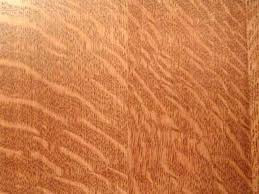odie
TOTW Team
- Joined
- Dec 22, 2006
- Messages
- 7,116
- Likes
- 9,815
I've had a couple of private messages concerning this bowl. Both feel this is not White Oak. One feels it may be Red Oak, and the other feels it's not Oak at all.
The background:
The "White Oak Crotch" identity was given to me by the person who sold this bowl block to me......someone in Iowa. I suspect it was someone who had a few pieces of this particular tree to sell, but was a private seller......not a dealer.
It is my opinion the species is indeed oak, but I am not completely sure about that......I just went with the information I was given. For sure, it does look like crotch figure, though. I have no clue as to the size of the tree, but I purchased all three pieces of this wood that were available, and this is the smallest of the three. All three pieces have had problems with cracking during the seasoning process, but I think I can fix them with epoxy. This one has epoxy repairs that turned out to my satisfaction......very hidden. The other two will be finish turned later......but probably not until after this one sells......(maybe) The other two pieces are roughed, but have been placed into storage.
The bowl is already posted in my Etsy shop, and is identified as white oak there. If that's incorrect, and I have no doubt about that at all, I'll have to change my listing. There is the disadvantage of not having the real thing in your hands for your own personal inspection. Photographs can be deceiving.....but, here are all five of the photos I have for you to make your own observations.
The moisture content of all three bowl blocks was +/- 24%. This is likely less than the MC at the time the tree was felled, so it appears the blocks did have some amount of storage time prior to them coming into my possession.
My usual reference is The Wood Data Base, and here is a link to the description of white oak there:
http://www.wood-database.com/white-oak/
So......what is your own thoughts on the identity of this bowl?
ko





The background:
The "White Oak Crotch" identity was given to me by the person who sold this bowl block to me......someone in Iowa. I suspect it was someone who had a few pieces of this particular tree to sell, but was a private seller......not a dealer.
It is my opinion the species is indeed oak, but I am not completely sure about that......I just went with the information I was given. For sure, it does look like crotch figure, though. I have no clue as to the size of the tree, but I purchased all three pieces of this wood that were available, and this is the smallest of the three. All three pieces have had problems with cracking during the seasoning process, but I think I can fix them with epoxy. This one has epoxy repairs that turned out to my satisfaction......very hidden. The other two will be finish turned later......but probably not until after this one sells......(maybe) The other two pieces are roughed, but have been placed into storage.
The bowl is already posted in my Etsy shop, and is identified as white oak there. If that's incorrect, and I have no doubt about that at all, I'll have to change my listing. There is the disadvantage of not having the real thing in your hands for your own personal inspection. Photographs can be deceiving.....but, here are all five of the photos I have for you to make your own observations.
The moisture content of all three bowl blocks was +/- 24%. This is likely less than the MC at the time the tree was felled, so it appears the blocks did have some amount of storage time prior to them coming into my possession.
My usual reference is The Wood Data Base, and here is a link to the description of white oak there:
http://www.wood-database.com/white-oak/
So......what is your own thoughts on the identity of this bowl?
ko





Last edited:






